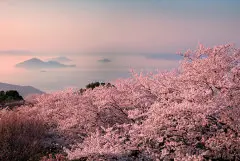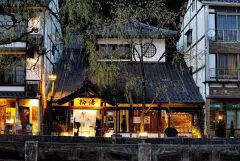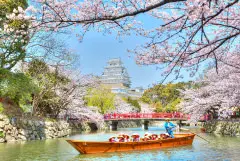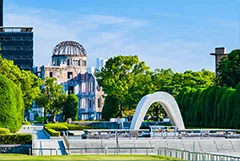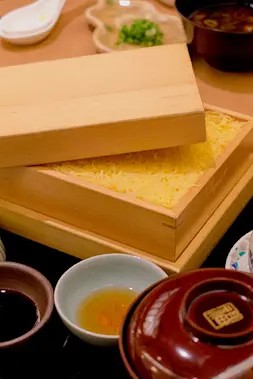Food & Drink
The Kobe Sake Masters - Kiku-Masamune and Hakutsuru

Hyogo prefecture produces 30 percent of all nihonshu, a.k.a. sake, in Japan. Famed for its pure, delicious water — a crucial ingredient in quality sake — the region continues to generate some of Japan’s most celebrated sakes. And with companies like Kiku-Masamune and Hakutsuru in the region, it’s no wonder.
Getting off my Kobe train at Uozaki station, I head down toward the river and walk through the rain, massively outpaced by the clear water rushing rapidly along beside me. Just a 10 minute walk, and I arrive at Kiku-Masamune, a sake brewery dating back more than 350 years.
Kiku-Masamune, and the nearby Hakutsuru brewery for that matter, provides a surprising step back in time from the jazzy modern surroundings of Kobe. The area looks more populated by apartment buildings than factories and warehouses, making the heritage on display inside these two museums all the more interesting.
Passing through the old walls into the historic building, a stop at reception reveals I’m to be given a guided tour. They take my suitcase and stow it for me as I’m ushered toward a short film for immersion into the world of Kiku-Masamune Nihonshu.
Just past reception stands a chair upon which Emperor Hirohito once sat when he visited here early in his reign. Today, Kiku-Masamune remains one of the makers creating nihonshu for the Imperial Household. There are photos of the Imperial family, including the next emperor, a very young Crown Prince Naruhito.
Leaving the Imperial Household behind, I’m guided into a cavernous room full of archaic machinery and tools. I always get excited about old contraptions, and love finding out how things we still enjoy today were made for hundreds — if not thousands — of years before humanity harnessed electricity.
It’s interesting to see the historic origins of nihonshu-making. My guide shows me that every display has a QR code providing information in multiple languages. Anyone can download a QR app, snap a photo, and read everything on a smartphone.
Back in the day, workers had to crush rice with their feet in a similar way to the grape squashing of winemakers around the world. But as sake-making season is during the cold months, this had to be done in freezing weather without a break for hours on end.
You could easily spend hours admiring the craftsmanship of the tools on display, and the intricacies of this amazing, time-honored process.
Famous for dry sake, Kiku-Masamune’s tasting room stands replete with delights from all stages of the process. You can try nihonshu in its rough, edgy stage before it has been stowed away to develop into that clear, crisp balance of perfection most of us know as sake.
Just a short walk down the road is the giant of Japanese sake, Hakutsuru, a name meaning “White Crane.” Here you’ll find a range of nihonshu spanning from Japan’s No. 1 selling Maru, to high-end bottles costing around $200 USD.
I stroll up to the the tasting counter, and to my delight find a few Hakutsuru samples placed on the bench in preparation for visitors to sample freely.
Hakutsuru’s 275 years of history sits on display inside the old brewery, now used as a museum. Inside, life-size mannequins evoke realistic scenes from the painstaking process of traditional nihonshu production. It sure looks like hard work!
My tour guide explained how the workers would often sing as they laboured, not just for enjoyment, but also to count the passage of time in the age before wristwatches. Moving on past the dioramas of men standing on huge wooden vats, I can’t help but stop and think how dangerous this work must have been.
Finding tools named kaeru, uma, and kitsune gao — because they resemble frogs, horses and fox faces — provided a strong reminder of how close the natural world was before industrialization and various forms of mass media.
By the same token, the workers would lay out the cooked rice to cool in the attic of the brewery, which in turn allowed mold from the wooden building to be carried through the air into the rice, hastening its transformation into sake.
Heading home after a long stroll through each of these amazing old breweries,, my bags were heavy with new delicious sakes to try with friends back home — what more could I possibly ask for?
Photographs by Peter Chordas Text by Julian Littler
RELATED DESTINATION
Hyogo
Hyogo Prefecture is roughly in the center of the Japanese archipelago. It has the Port of Kobe, which plays an important role as the gateway of Japan. It also is home to plentiful tourist attractions such as Himeji Castle, a UNESCO World Heritage site, and several hot spring areas. Kobe beef, one of the three major brands of wagyu beef, is a delicacy.










